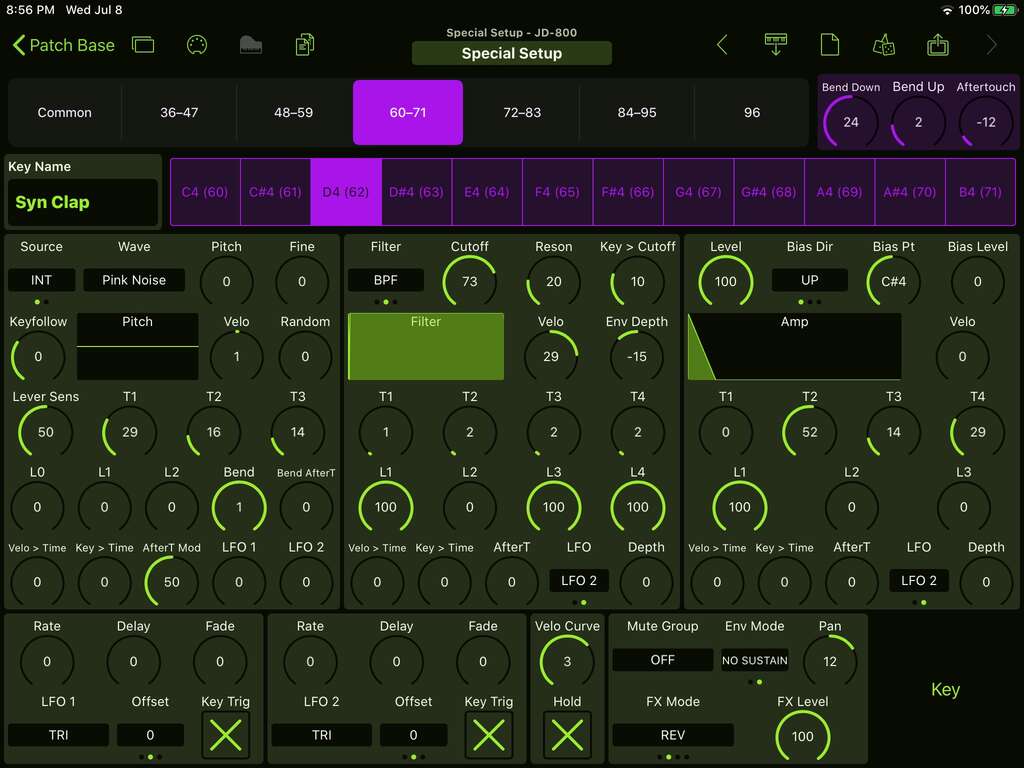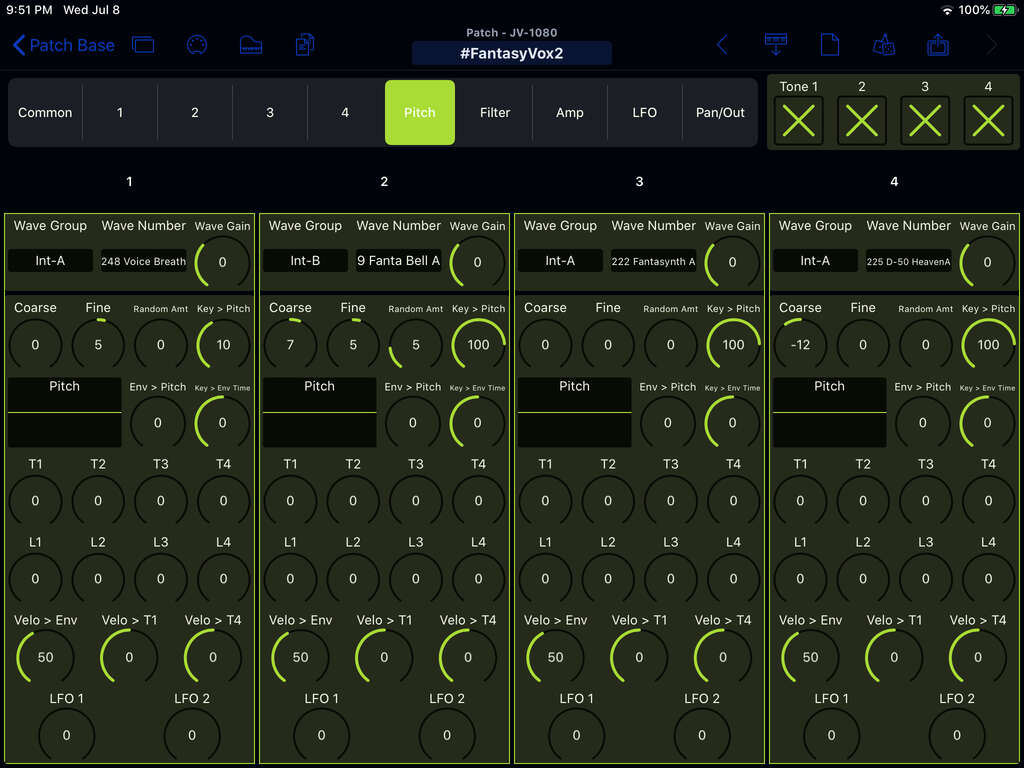Roland JD-800 Editor Now Available, Plus Updates to JV-1080 Family
by Chadwick Wood
July 9th, 2020
The latest updates to Patch Base (iOS version 3.12 and Mac version 1.6) add an editor/librarian for the Roland JD-800. The JD-800 is a very hands-on digital synth from Roland made in the early 90's — a sort of precursor to the JV-1080 family with its 4-tone voice structure.
But before I get into the details of the new editor, I want to give a very big thank you to Ken DiStefano in New Jersey! Ken did the work transcribing the sysex details of the JD-800 from the manual to spreadsheets (now hosted on the growing Patch Base Synths repository on GitHub). He also tested the editor and helped with the debugging process. This editor wouldn't be finished without his contribution. Thank you, Ken!
Voice Editor
The Voice Editor is the main attraction for the JD-800 editor. Like the other Roland multi-tone editors in Patch Base, the JD-800 Voice Editor gives you access to all of a tone's parameters on a single screen.

But what's more, this new editor introduces a new Palette-style editing mode to Patch Base as well. With these screens, you can see the parameters across all 4 Tones at once, so you can quickly make edits to all of them. Great for so many situations, such as matching envelopes across tones, or quickly changing the samples used in multiple tones.

And of course you have access to all of the Common and Effects parameters on a screen as well. The Effects sections dynamically highlight to show you what's active and what's not.

Special Setup Editor
Perhaps less-used but very powerful is the JD-800's Special Setup section, which is the equivalent of later Rhythm sections in other Roland synths. You can create a 61-voice drum kit with this section (or a multi-timbral instrument, or a sort of prepared piano, if you think about it). Patch Base makes it easy to navigate your Special Setups.

JV-1080, XP-80 and Family Updates
This release of Patch Base also includes updates to the JV-1080 family of editors. The new palette-style editing panels have been added here as well, plus other smaller improvements.

Thanks to Contributors
Some weeks ago I put out an email that mentioned looking for help with part of the editor creation process, specifically the transcription of technical info from the manuals of various synths into a format that's more ready for use in the creation of editors. I got a really big response to that request, and several people have started helping in the time since (you can see some of the progress here on GitHub). It's taken me awhile to get in the swing of coordinating this effort, but I'm starting to get the hang of it (apologies to those who've waited weeks at a time for my replies!). I just want to say many, many thanks to everyone who's helped so far, and offered to help. More specific thanks will come with upcoming releases! This really feels like a big step in a new direction for what's happening at Coffeeshopped, and it's exciting and heartening to know that there's such a great community around Patch Base.
And there's more on the way.
